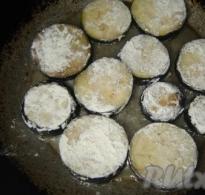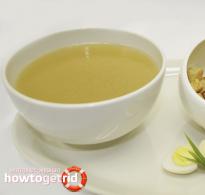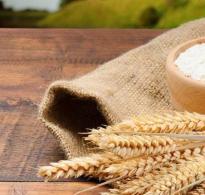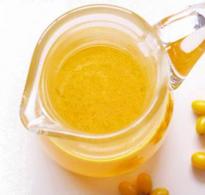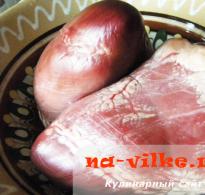Common boletus mushroom or obabok (photo). Obabka mushrooms
Boletus flowers appear when the mountain ash blooms ( folk sign). It happens that you see a dark brown mushroom cap in a birch grove and think: white. And if you pick it up, it turns out to be a boletus mushroom.
And don’t worry, boletus is a good edible mushroom, since fried or boiled it is not much inferior to white mushroom. People call it differently: babka, babka white, gray mushroom, spikelet, black mushroom, obabok. The cap of a young boletus is semicircular and occupies the thickened part of the stem. In damp weather, the cap becomes a little slimy and has different color tones: from light yellow to dark brown (5-15 centimeters in diameter). The lower surface of the cap is spongy, finely porous, light gray, with rusty spots in places. The skin on top is very thin and cannot be removed like a butter dish. The leg is cylindrical, strong, white, covered with gray fibrous scales (4-15 cm high and 1-3 centimeters thick). The crumb is white or grayish-white; when broken, it changes color and quickly becomes brittle. The smell is pleasant, mushroom.
Grandmothers with a massive black cap are also from the boletus family. It's a lot of fun to collect them. They do not hide in the grass, they grow in spacious birch forests in groups and alone, always in sight. They can be found at the edge of the forest, on roads, on hills and clearings of birch and mixed forests. But even in a mixed forest, the boletus still stays closer to the birch.
Under the hornbeam there is a black babka, or hornbeam. The peculiarity of this mushroom is that it grows very close to the surface exits of the root, near the trunk itself, or even simply in the rhizome of the tree. They grow densely and in young hornbeam. Hornbeam grandma differs from ordinary boletus in its pulp, which turns blue, like that of boletus. This is a good edible mushroom, distributed mainly in the hornbeam forests of the South and West of the European part of the Russian Federation in July - August.
In moist birch and pine-birch forests, in young dense birch forests with grass in clearings and burnt-out clearings, on the coast of swamps, on peaty soils, yellow-pore babum grows. Her hat can be up to 10 centimeters in diameter, gray, often dark gray, with large specks. The broken crumb turns pink. The leg is up to 8 centimeters long, the bottom is thickened, white with scales. An autumn mushroom, growth period from late August to October. Edible, second category.
In damp, moss-covered lowlands and in swamps with birch trees, a variety of boletus with white speckles, 7 centimeters in diameter, is found - boletus boletus. Its pulp is loose, fragile, and watery. You can squeeze water out of it like from a wet sponge. The leg is thin, long, white. Although they are rare, they are abundant in places. An autumn mushroom that grows from late August to September. Edible, second category.
So, boletus mushrooms can be collected throughout the season, from the end of May to November.
The first season of these mushrooms appears at the end of May or at the beginning of June, which coincides with the flowering of rowan and the heading of rye - hence the name of the mushroom "spike". The second season - stubble - occurs when the linden blossoms, after haymaking, harvest. And these two summer periods of mushrooms pass very quickly. The third mushroom season - November - as always, grows somewhere from mid-August to late autumn(until the second ten days of October in warm autumn). This layer is the most productive and durable. For boletus, the best soil temperature is 15-16 degrees. Humidity limit from 53 to 98 percent.
Babkas, or boletus mushrooms, are good and varied in preparation: in soup, in gravy, fried, baked, in pies. They are delicious in a marinade. When dried, however, boletus mushrooms turn black, like all others except white ones. That's why they are called black mushrooms. Dried boletus mushrooms are on par with eggplants and rye bread. These mushrooms are more nutritious than cabbage, cucumbers and onions.
Description
Obabok is a genus in the Boletaceae family. From early summer to late autumn, its representatives appear in large groups or singly in deciduous and mixed forests. They grow mainly in temperate zones of the Northern Hemisphere. Often found in Arctic regions and subtropics.
The buds form mycorrhizae with trees. It is on this “neighborhood” that the division into species is based. Thanks to him, these mushrooms are better known under their second names - boletus and boletus.
boletus
In full accordance with the name, these mushrooms settle near birch trees, be it a grove, forest or park plantings. Some species grow in the tundra near dwarf birch trees. Some boletus prefer marshy areas, others prefer edges, and still others prefer hills. They are all moisture-loving. In rainy summer and autumn, mushroom pickers expect the most abundant harvests.
Boletus mushrooms differ in the size of the fruiting body. Newly emerging fungi have a convex cap, while adults have a prostrate cap. Its diameter reaches 25 cm. The color is in gray, brown and black shades.
The white tubular layer gradually “gets dirty”, becoming dark gray. It can be easily removed.
The cylindrical leg grows up to 15 cm. It is slightly expanded downwards and covered with dark scales. Its color practically repeats the famous birch pattern.
The pulp is white with pleasant smell, the color does not change at the break.
All boletus mushrooms are recognized edible mushrooms. They can be boiled, fried, dried, pickled and salted.
Boletus
Contrary to the name, these mushrooms get along well not only with aspens. They also grow near oaks, hornbeams, poplars and other deciduous trees. The name of the mushroom is associated with the bright color of the cap, reminiscent of the color of autumn aspen leaves.
The most famous places of growth are Europe, the Urals, Siberia, and the Far East. Boletuses appear in waves: at the beginning of June, in mid-July, at the end of October.
When the boletuses just come to the surface, their cap resembles a cap in shape. Later it becomes cushion-shaped. It feels slightly velvety to the touch. The color can be bright red, deep orange, white and yellow. After 8–10 days, the mushroom ages and the color changes to brown. The tubular layer is yellowish.
The stocky leg grows up to 20 cm in height. It is covered with dark fibrous scales.
The dense pulp is white. When broken/cut, it first turns blue, then turns black.
All boletuses are suitable for culinary processing. They can be fried and boiled, or pickled. In addition, these mushrooms are suitable for drying.
The boletus mushroom is edible and belongs to the Boletaceae family. Depending on its habitat, it is conventionally divided into three types: swamp, gray, and ordinary. From this article you will learn more about the boletus, about it and where and at what time it grows.
Description of the mushroom
The common boletus (boletus, podobabok, birch boletus) is a medium-sized one that belongs to the Boletaceae family. Its soft cap has a diameter of 5-15 cm. Its outer surface is always dry, and when it rains, old mushrooms become sticky. (thickness 2-4 cm) is white or gray with black specks. This mushroom can be found in mixed forests that contain birch trees. It grows from their root system. Boletus mushrooms can be collected from July to October.
Types of boletus and where they grow
Marsh grows in wetter soil in marshy areas where there is moss, but close to birch trees. Grows singly. Its cap can reach a diameter of 10 cm. The color of the cap can be gray, white, gray-brown, and the legs can be white. They differ in that they turn pink at the incision site. The taste properties of the marsh boletus are much lower than those of the common boletus. It is better to eat young mushrooms, because old ones crumble too much when cooked. This type It’s better to stew or fry, because the pickles from it will turn out bad.
The gray obabok mushroom (hornbeam) can be found in the southern regions of Russia. It grows in deciduous forests near oak, hornbeam, and birch trees. The hat can be colored yellow-brown or black-brown. Its surface is wrinkled and cracks very badly during drought. When cut, the flesh turns black or dirty purple.
If you want to see what a boletus mushroom (boletus mushroom) can be like, the photo below will clearly demonstrate everything.
On the left in the picture is an ordinary obabok. In the middle is a marsh boletus. On the right is a gray mushroom.
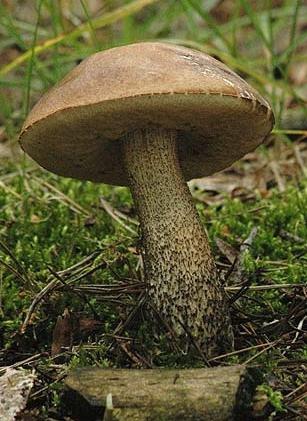
What are the benefits of Erezoviki?
The edible mushroom obabok is not only very tasty, but also contains optimal quantity fats, carbohydrates, proteins. It contains water, ash, monosaccharides, minerals, disaccharides and fatty acids. It also contains many vitamins B, E, ascorbic acid, sodium, magnesium, phosphorus, iron, manganese, potassium, calcium. Despite such a rich complex of elements, boletus - low calorie product. It contains easily digestible proteins and beneficial amino acids (tyrosine, glutamine, leucine, arginine). Dietary fiber absorbs toxic substances and removes them from the human body.
Use of obabok mushroom in cooking
Young boletus mushrooms are famous for their excellent taste, which is not inferior. To prevent them from darkening during heat treatment, only the caps should be fried or boiled, and the legs should be used for making sauces or soups. Obabok mushroom will turn out amazing when fried or boiled. Any soup, marinade or just fried potatoes will become a favorite dish of your loved ones or guests!
Boletus mushrooms appear when the rowan tree blooms. (Folk sign.)
By chance, you notice a dark brown cap of a mushroom in a birch grove and think - . And if you take it from your hand, it turns out to be a boletus. And don’t worry, boletus, good, fried or boiled, is not much inferior.
People call it differently: babka, white babka, birch mushroom, gray mushroom, black babka, black mushroom, obabok, brant. The cap of a young boletus hugs the thickened stump of the stem in a hemispherical shape, like an acorn cup. It continues to remain convex; smooth, slightly slimy in wet weather, different tones of color - from light yellow to dark brown (5-15 centimeters in diameter). The lower surface of the cap is spongy, finely porous, light grayish, with rusty spots here and there. The skin on top is very thin and cannot be removed like that of. The leg is cylindrical, tapering towards the cap, strong, white, covered with gray fibrous scales (4-15 centimeters high, 1-3 centimeters thick). The pulp is white or grayish-white; when broken, it changes color and quickly becomes brittle. The smell is pleasant, mushroom. Black-capped, plump-bodied beauties are the tastiest in the boletus family. Collecting them is a great satisfaction. They do not hide in the grass; they grow in spacious birch forests in groups and individually, always in plain sight. They can be found at the edge of the forest, on roads that pass through a mowing meadow, on the lawns of birch and funny forests. But even in a mixed forest, the boletus still stays closer to the birch.
Boletus mushrooms grow thickly from June to October. This fungus has a mycorrhizal fungal root that grows together with the birch root. Grandmas are not parasites, but friends of the tree.
Black babushka, or hornbeam, grows under the hornbeam. The peculiarity of this mushroom is that it grows very close to the surface exits of the roots, near the trunk itself, or even just in the rhizome of the tree. They grow densely and in young hornbeam growth. Hornbeam grandma differs from ordinary boletus in its pulp, which turns blue, like that of. This is a valuable species, distributed mostly in the hornbeam forests of the South and West of the European part of the CIS countries in July - August.
In moist birch and pine-birch forests, in young dense birch forests with grass in clearings and burnt-out glades, on the coasts of forest swamps, on peaty soil, yellow-faced granny grows. Its cap can be up to 10 centimeters in diameter, gray, often dark gray, with large light specks. Broken flesh turns pink. The leg is up to 8 centimeters long, thickened at the bottom, white, with scales. Autumn mushroom, growth period from late August to October. edible, second category.
In damp, moss-covered birch forests and swamps with birch trees, a variety of boletus with a white cap, up to 7 centimeters in diameter, boletus boletus, is found. Its pulp is loose, fragile, and watery. You can squeeze water out of it like from a wet sponge. The leg is thin, long, white. Although it is rare, it is dense in places. An autumn mushroom that grows from late August to September. Edible, second category.
So, boletus mushrooms can be collected throughout the season, from the end of May to November. The first season of these mushrooms appears at the end of May or at the beginning of June, which coincides with the flowering of rowan and the heading of rye. Hence the name of these mushrooms - spikelets.
The second season is the stubble - when the linden blossoms, after haymaking, at harvest. And these two older periods of mushrooms pass very quickly. But the third season of mushrooms - leaf fall - as always, grows somewhere from mid-August until late autumn (until the second ten days of October in warm autumn). This layer is the most productive and most resistant. For boletus, the best soil temperature is 15-16 degrees. Humidity limit from 53 to 98 percent.
Babkas, or boletus mushrooms, are good in every way: in soup, in gravy, fried, baked, in pies. They are also delicious in marinade. When dried, however, boletus mushrooms turn black, like all others except white ones. That's why they are also called black mushrooms. And it's not harmful. Dried boletus mushrooms are on par with eggplants and rye bread in terms of calorie content. These mushrooms healthier than cabbage, cucumber and onion. Boletus mushrooms grow in the forests of most regions of Ukraine.
Boletus (boletus)
Boletus mushrooms are mushrooms of the genus Leccinum. Another name for this group of mushrooms is “obabok”.
Appearance and description
The common boletus has convex brown caps with a diameter of up to 15 cm. In mature mushrooms, they are matte and dry. The tubular layer of these mushrooms is light (in older ones it is gray) with small pores. The legs of boletus mushrooms are dense and longitudinally fibrous, up to 17 cm high and 1-3 cm thick. Their color is whitish, but there are black-brown or gray longitudinal scales on the surface.
The flesh of young mushrooms is quite tender, but dense and light in color. Later it becomes watery and loose. The legs inside are fibrous and quite hard.
Species
The following types of boletus are distinguished:
Ordinary
The color of the caps of this species can be of different colors, the flesh is white. Distributed in the forests of America and Eurasia.
Multicolored
This mushroom loves marshy areas and is found in mosses. Its difference is the variegated color of the cap.
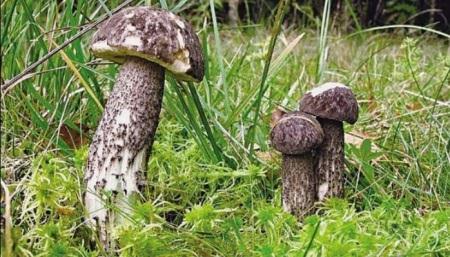
Bolotny
This type of boletus is distinguished by its almost white cap and its growth near swamps. Its pulp is very loose and boils very soft when cooked, so this mushroom is eaten only when it is young.
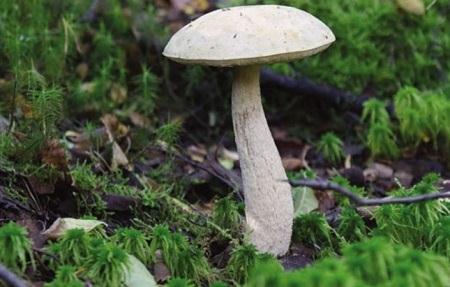
Grey
Another name for this species is “hornbeam”, since its mycorrhiza is most often formed with hornbeams. Ripens from June to October. This mushroom is valued less than the common boletus due to the less dense flesh of its caps.
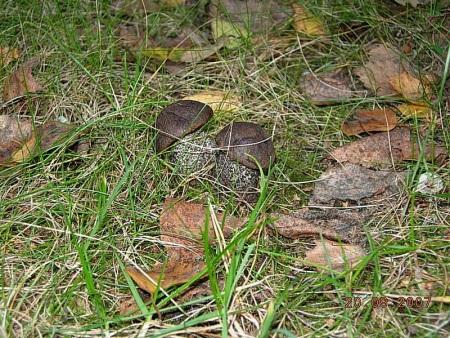
Black
A characteristic feature of this species is the dark color of the cap (it can be black or dark brown). Another name for the species is “blackhead”. Found in birch and pine forests, loves damp places.
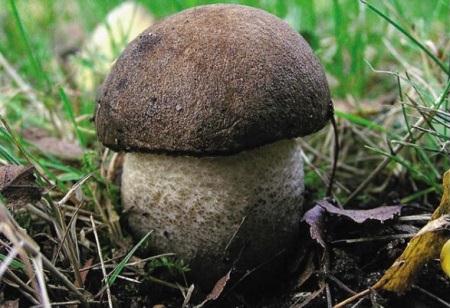
Harsh
Also called hard boletus and poplar boletus. Mycorrhiza in this fungus forms with poplars and aspens. This mushroom loves calcareous soil. Its dense flesh is very rarely affected by worms.
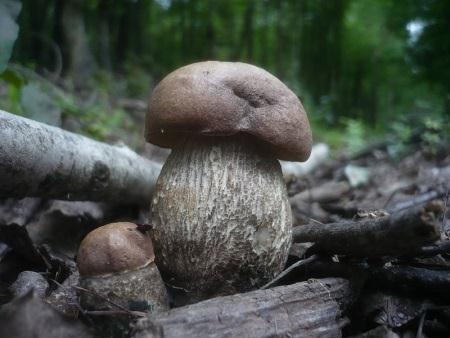
Chess
It is also called blackening, because when cut, the flesh of such a mushroom acquires a red-violet-brown hue and then turns black. Mycorrhiza of this fungus is formed with beeches and oaks.
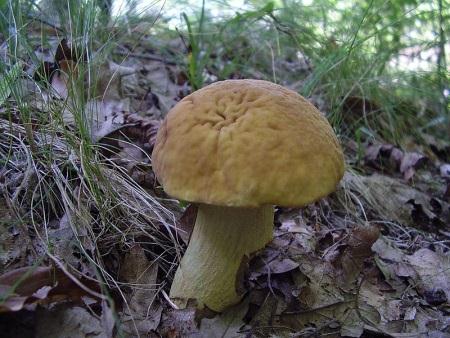
Pinkish
The peculiarity of this type of boletus is that when broken, its flesh acquires a pink tint. It grows in birch forests in damp and swampy places.
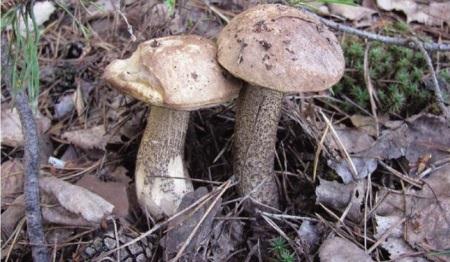
Ash gray
It is distinguished by light brown caps and white flesh that turns pink when cut.
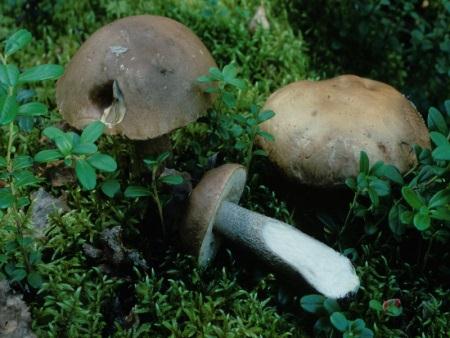
Where does it grow?
You can meet boletus in deciduous forests, most often next to birch trees. These mushrooms also grow in mixed forests. They grow both individually and in large groups. Often boletus can be found at the edges of forest roads.
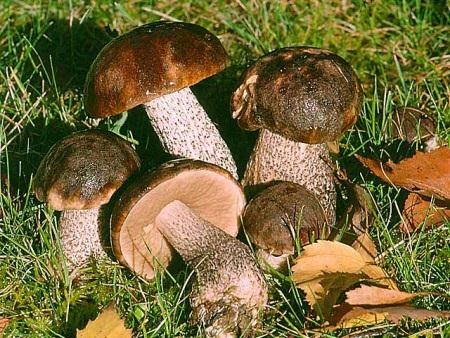
How to find in the forest
Ripening of boletus mushrooms begins at the end of May. You can find these mushrooms in the forest until mid-October. Since the flesh of mature mushrooms is loose, collecting boletus mushrooms is recommended at a young age.
It is important to distinguish boletus from gall mushrooms, which are characterized by:
- unpleasant taste;
- pinkish color of the tubes;
- mesh leg pattern;
- “greasy” pulp;
- another place of growth (in coniferous forests, in ditches, next to stumps).
Characteristics
- All types of boletus are edible mushrooms.
- They are distinguished by caps of different shades with white flesh below, which does not change color when pressed, as well as narrow legs.
- The legs are covered with black scales.
- Such mushrooms grow near birch trees.
- The main collection season is late summer and autumn.
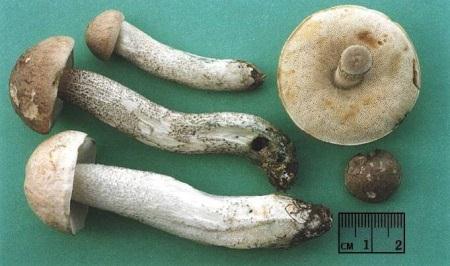
Nutritional value and calorie content
100 g of boletus contains:
Chemical composition
Boletus mushrooms contain:
- proteins (35%), including valuable amino acids;
- sugar (14%);
- fats (4%);
- fiber (25%);
- vitamins C, B1, PP, B2, D, E;
- magnesium, potassium, calcium, manganese and other elements.
Useful properties
- Among the amino acids contained in this type of mushroom, there is a lot of arginine, glutamine, tyrosine and leucine.
- Great content dietary fiber in boletus provides it with the ability to remove toxins and harmful substances from the body.
- This mushroom has antioxidant activity, as well as positive impact on mucous membranes and skin.
- Since boletus contains a lot of phosphoric acid, it valuable product for the musculoskeletal system.
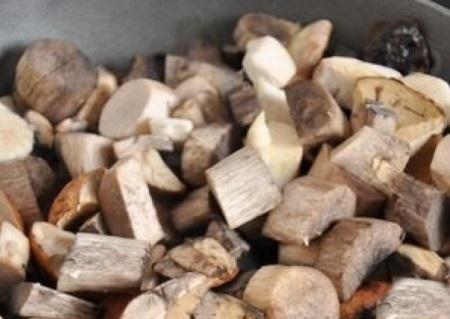
Harm
- Individual intolerance to this type of mushroom is possible.
- Boletus, like other mushrooms, is not consumed in childhood.
- It is contraindicated for intestinal diseases and peptic ulcers.
- Also, the danger of consuming boletus is associated with the risk of confusing it with gall fungus.
Application
In cooking
- This type of mushroom is edible and is used in the preparation of soups and main courses.
- It is also dried, frozen, pickled and salted.
- During processing, boletus mushrooms often darken.
- For food consumption, it is recommended to collect young hard mushrooms.
- Since these mushrooms do not have a distinct taste, they should be cooked with other types of mushrooms.
- Sauces and gravies are prepared from dried boletus.
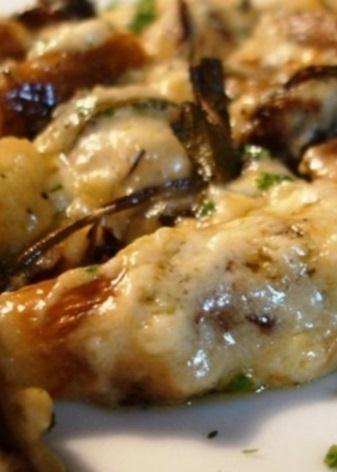
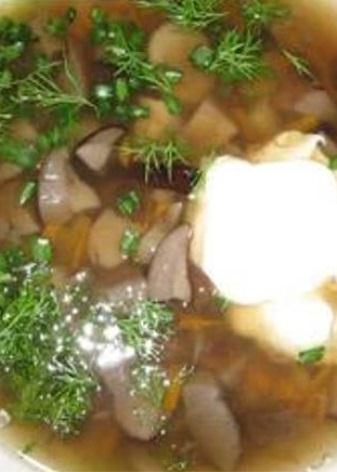
How long to cook
Fresh mushrooms should be thoroughly washed to remove any debris and contaminants. The bases of the boletus stems are also cut off. Mushrooms are poured cold water(its volume should be twice as large as the volume of mushrooms). You need to put salt in the water, taking a tablespoon for each kilogram of mushrooms. When the water boils, drain it and fill the boletus mushrooms with clean cold water. These mushrooms are cooked for an average of 40-50 minutes, periodically removing the foam. The finished mushrooms sink to the bottom. If you want to boil boletus mushrooms in a slow cooker, then set the “baking” mode for 30 minutes.
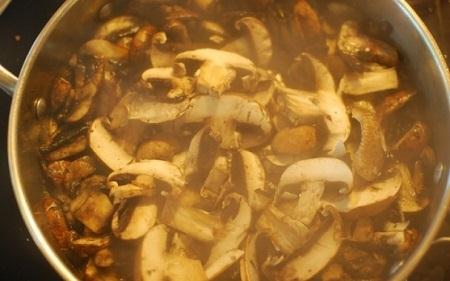
How to pickle
For pickling, medium-sized, strong mushrooms are used. For each kilogram they take:
- 40 g salt;
- 120 ml water;
- 5 peppercorns;
- 4 bay leaves;
- 2 cloves;
- several sprigs of dill.
Peeled, washed and boiled mushrooms for 15 minutes, drain in a colander and place in jars, sprinkling them with salt. Next you need to prepare the brine - add dill, cloves, pepper and bay leaf. After filling the mushrooms with brine, put them in a cool place. They can be eaten after a month.
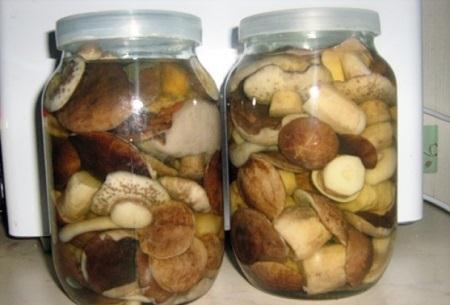
How to marinate
For a kilogram of boletus you will need:
- 2 tbsp. l. salt;
- 2 tbsp. l. lemon juice or citric acid;
- 2 tbsp. l. vinegar 9%;
- 5 bay leaves;
- 1/2 tsp. allspice peas.
Peeled and washed mushrooms should be chopped. The next stage of preparation is to boil them for 50 minutes in a large volume of water, regularly removing the foam. After adding vinegar and seasonings to the water, the mushrooms should be boiled for another ten minutes. Next, the mushrooms are removed with a slotted spoon and placed in jars, after which the broth is poured on top. Cooled pickled boletus mushrooms are stored in a cool place.
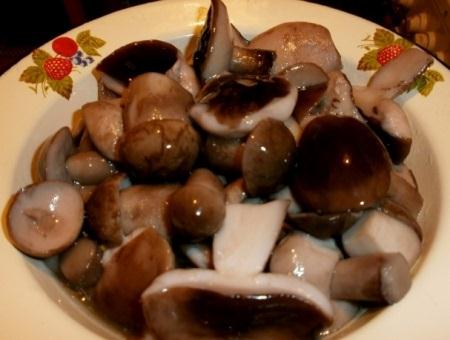
How to dry
Fresh mushrooms without damage are selected for drying. They are cleaned, washed and dried a little, after which they are laid out on baking paper. If the mushrooms are small, you can put them whole, and cut the large boletus mushrooms. Mushrooms should be dried in the oven at a temperature of approximately +50 degrees. Leave the oven door open.
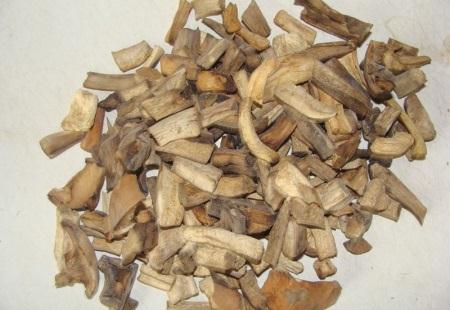
How to fry
Before frying boletus mushrooms, they are usually boiled for 20 minutes. Fry the mushrooms for 30 minutes, uncovered. Most often they are fried together with potatoes (for 500 g of potatoes 300 g fresh boletus) or in sour cream (mushrooms fried until golden brown are poured with sour cream and simmered for another 10 minutes).
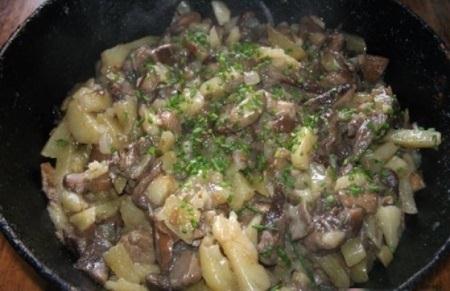
Boletus in milk
We bring to your attention a video recipe for cooking boletus mushrooms.
In medicine
- Traditional medicine prescribes the use of boletus mushrooms in the treatment of kidneys.
- These mushrooms also help with problems with nervous system and blood sugar levels.
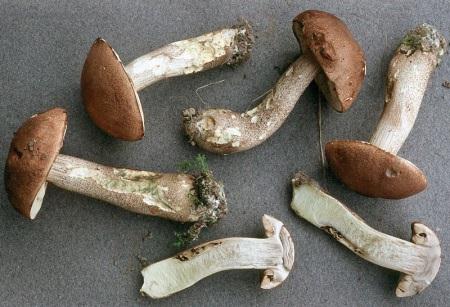
When losing weight
Boletus mushrooms should be included in their diet for anyone who wants to get rid of excess weight because it is a low-calorie product.
The boletus mushroom is distinguished by very fast growth - in a day it grows by 4 cm and adds about 10 g. After six days of growth, the mushroom begins to age.
What's new in the "Mushrooms" section
Larch polypore
Reishi (varnished tinder fungus)
Chaga (black birch mushroom)
Saffron milk caps
Valuy
Truffles
All rights reserved, 14+
Copying site materials is possible only if you install an active link to our site.
More information


